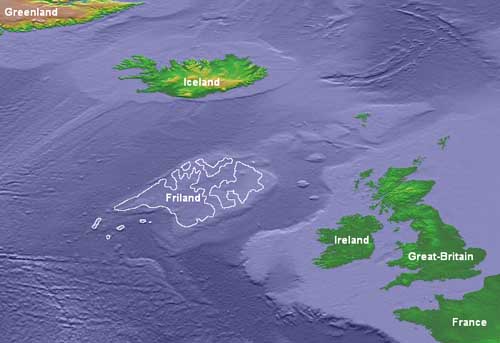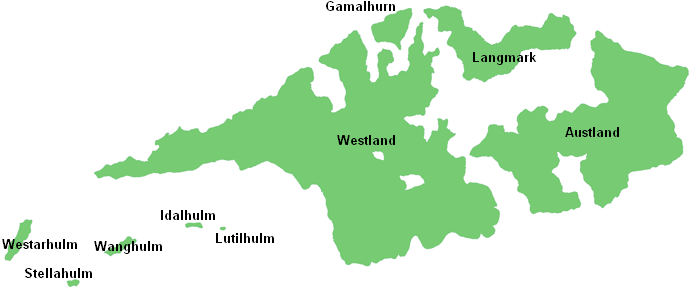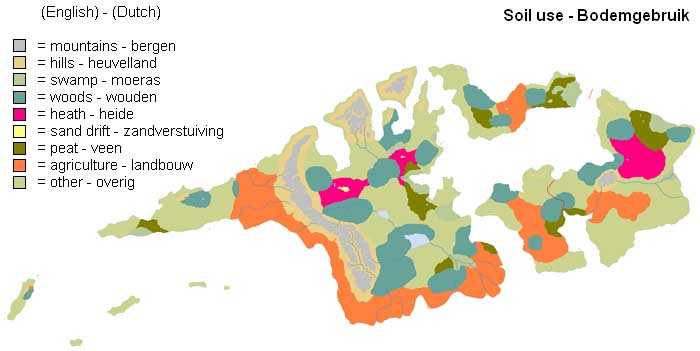

Geology

Location
Friland is a group of islands in the Atlantic Ocean south of Iceland and west of Ireland. The Frilandic archipelago consists of nine big islands and numerous smaller ones, of which most are uninhabited and some even disappear under the surface of the Atlantic Ocean during high tide. The biggest island is Westland, followed by Austland and Langmark. On the archipelago the states of Friland and Hiveria are located.

The most important islands of Friland
Tectonics
The archipelago is part of the Rockall plateau, which is connected to Europe and Asia: it lies east of the fault line between the North American Plate and the Eurasian Plate. Although minor earthquakes do occur on Friland from time to time, it is situated on a stable plateau and is not as active as Iceland. The Frilandic islands do slowly move westwards. It is suspected that the islands were originally connected to Ireland.
Rock and fossils
The majority of the Frilandic soil was formed during the Carboniferous, about 320 million years ago. The river delta in Riksga mainly consists of recent sediments from the Holocene.
Friland hasn't always been an archipelago; fossils of shellfish show that it once lay on the bottom of the ocean. However, scarce findings of fossil plants and land animals do suggest that at least small parts of the land must have laid above water. There is also an occurrence of coal in some places, which was formed from plant material during the Carboniferous. Until this day no fossils of dinosaurs have been discovered in Friland, but fossil imprints of amphibians, plants and insects have been found. The most spectacular discovery so far is a well-preserved imprint of a giant dragonfly (Meganeura), with its wing span of over 75 centimeters (30 inches) it was the biggest flying insect in history. However, most of the fossils that are found in Friland concern sea creatures.
Raw materials
Apart from some small coal deposits hardly any fossil fuels are present in the Frilandic soil. Despite this, the soil is full of minerals: especially metals, sulfides, halogens, oxides, hydroxides and silicates. The four most important minerals are lead, gold, iron and copper; together they provide a considerable part of Friland's income.
Soil use
The west coast of Friland, especially Skak and western Berglaft, are very windy and rainy. The soil is very fertile in some places, especially near the rivers. The eastern part of Westland, which lies on the lee side of the long mountain range (Langfergun), is very woody. There are also bogs and swamps in some places. Depletion of the soil in the Frilandic shire of Nurūland and in the Hiverian province of Danab created heath lands.


|